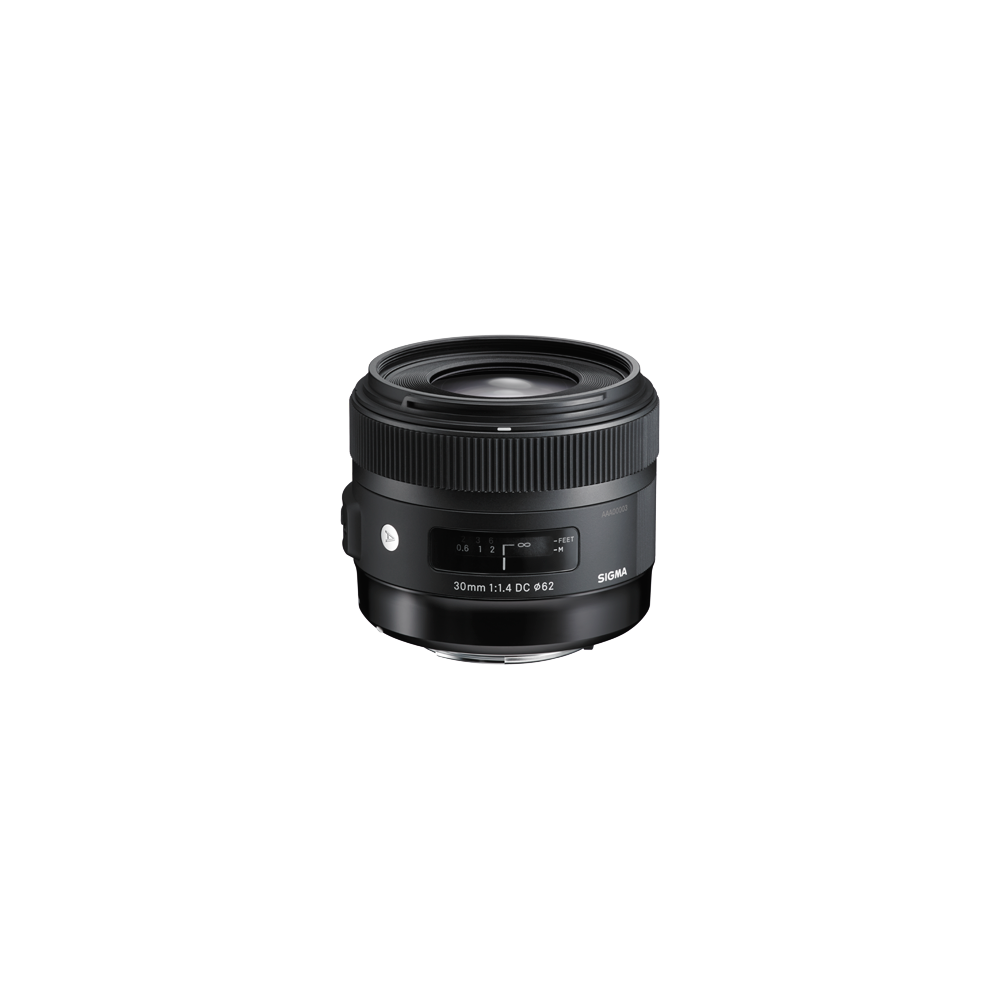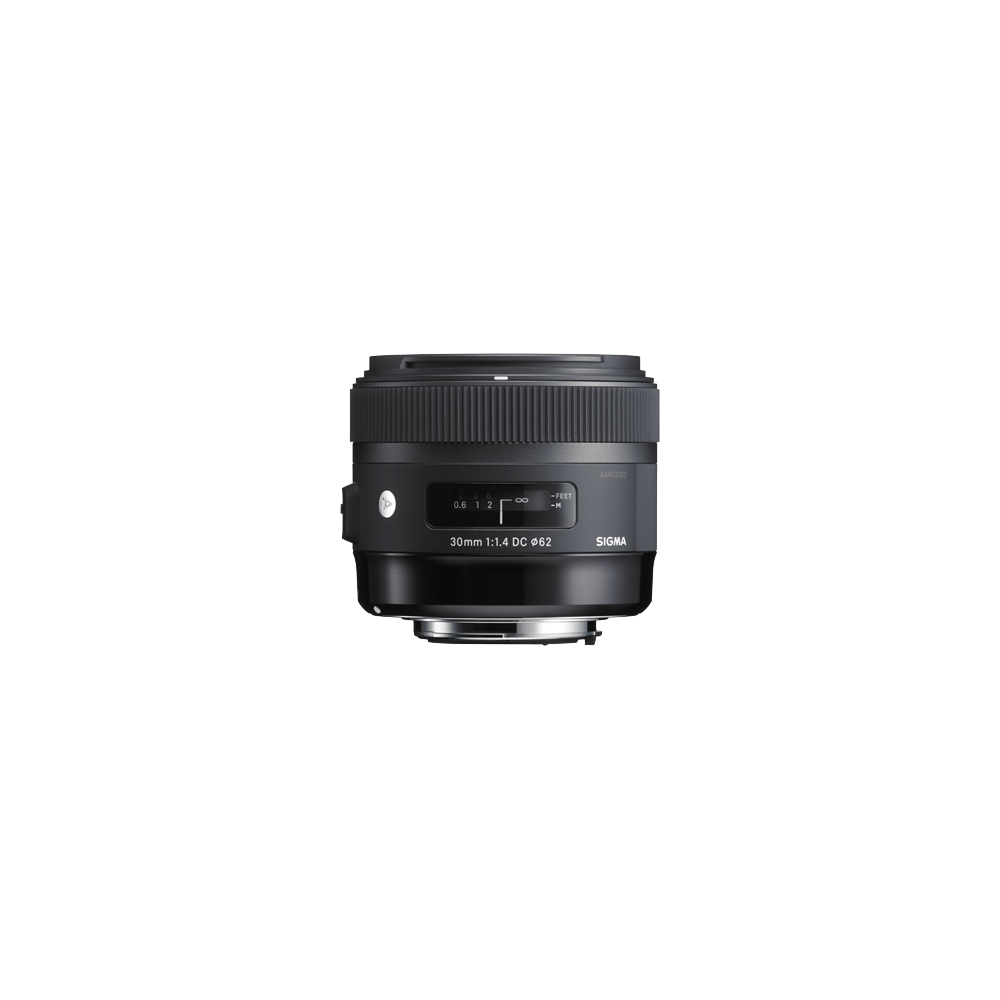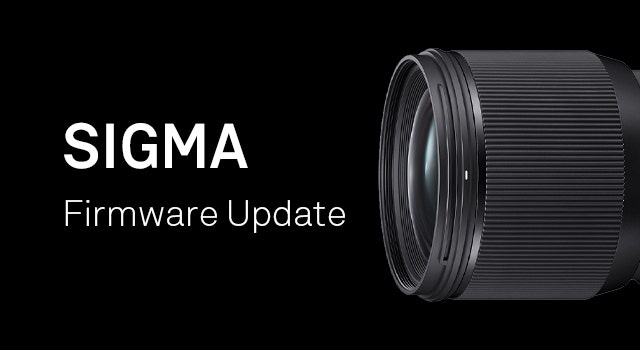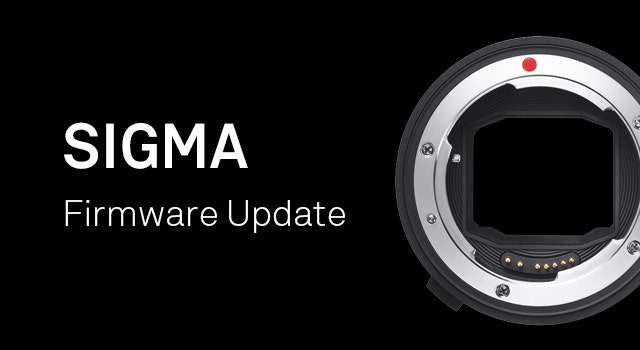30mm F1.4
DC HSM
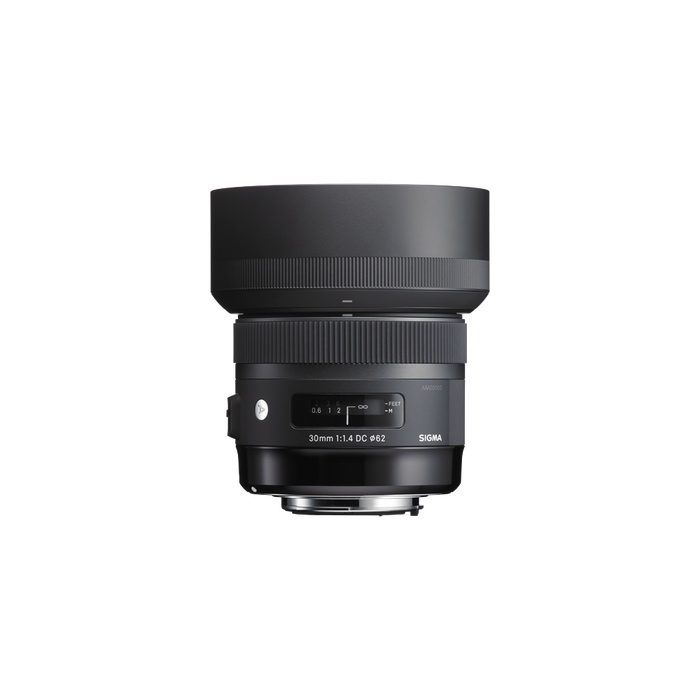

- Large aperture high-speed lens F1.4
- Minimal aberration
- Rounded diaphragm for beautiful bokeh
- High speed HSM autofocus
- USB Dock Compatibility
- Made in Japan
AWARDS
|
|
|
| Angle of view | Wide Angle |
|---|---|
| Camera Type | DSLR |
| Lens Mount | Canon EF-mount, Sony A mount, Nikon F, Sigma SA |
| Sensor Size | APS-C |
| Construction | 9 Elements in 8 Groups |
| Angle of view | 50.7º |
| Number of diaphragm blades | 9 (rounded diaphragm) |
| Minimum aperture | F16 |
| Minimum focusing distance | 30 cm |
| Maximum magnification ratio | 1:6.8 |
| Filter diameter | 62mm |
| Dimensions (diameter x length) | All mounts ⌀ 74.2 mm x 63.3 mm |
| Weight (g) | All mounts 435g |
| Edition number | A013 |
| Supplied Accessories | Lens hood LH686-01, Front Cap LCF-62mm III, Rear Cap LCR II, Case LS-301K |
| Accessories | WR Protector Filter 62mm, WR C-PL Filter 62mm, Mount Converter MC-11, Mount Converter MC-21 |
| EAN-code | Pentax K 085126301613 |
| Specifications Info | *Canon, Sony A and SIGMA SA mounts discontinued All figures calculated by Sigma SA mount. |
A large-aperture F1.4 standard lens to please any photographer
A large-aperture lens with minimal optic aberration and superb peripheral resolution.
In 2005, Sigma introduced the Sigma 30mm F1.4 EX DC HSM large-aperture APS-C format standard lens. Having reorganized its lenses into three product lines, Sigma created the 30mm F1.4 DC HSM large-aperture APS-C format standard digital SLR camera lens for the Art line. Like other Art lenses, it offers exceptional optical performance throughout the image. Highly versatile, it lets the photographer use distance from the subject and aperture to achieve many different styles of photographic expression. For example, the photographer can leverage the shallow depth of field that creates beautiful bokeh for snap shots, portraits, and landscapes, and many different styles of photography.
Lens construction
Putting a large-aperture aspheric lens first in the series of lenses makes possible a slim barrel, while optimized power distribution helps correct various types of optical aberration. These features give this F1.4 large-aperture lens truly optimal image quality.


High resolution and outstanding photographic expression
Minimal aberration combined with beautiful bokeh effects at large-aperture settings.
Thanks to their easy-to-use angle of view, standard lenses allow photographers to express themselves fully. The 30mm F1.4 DC HSM leverages superior optical performance to offer outstanding expressive power at a wide range of focusing distances. Optimized power distribution minimizes curvature of field, thereby preventing a loss of image quality at the edges of photographs. The use of a double aspheric lens minimizes spherical distortion, astigmatism and coma. Coma of point light sources is minimized near the edge of the image, and an attractive round bokeh effect is produced at large-aperture settings.


Rounded diaphragm
When photographing with point light sources such as electric lights or reflections on a body of water in the background, the rounded 9-blade diaphragm helps produce an attractive bokeh effect—even at large-aperture settings.
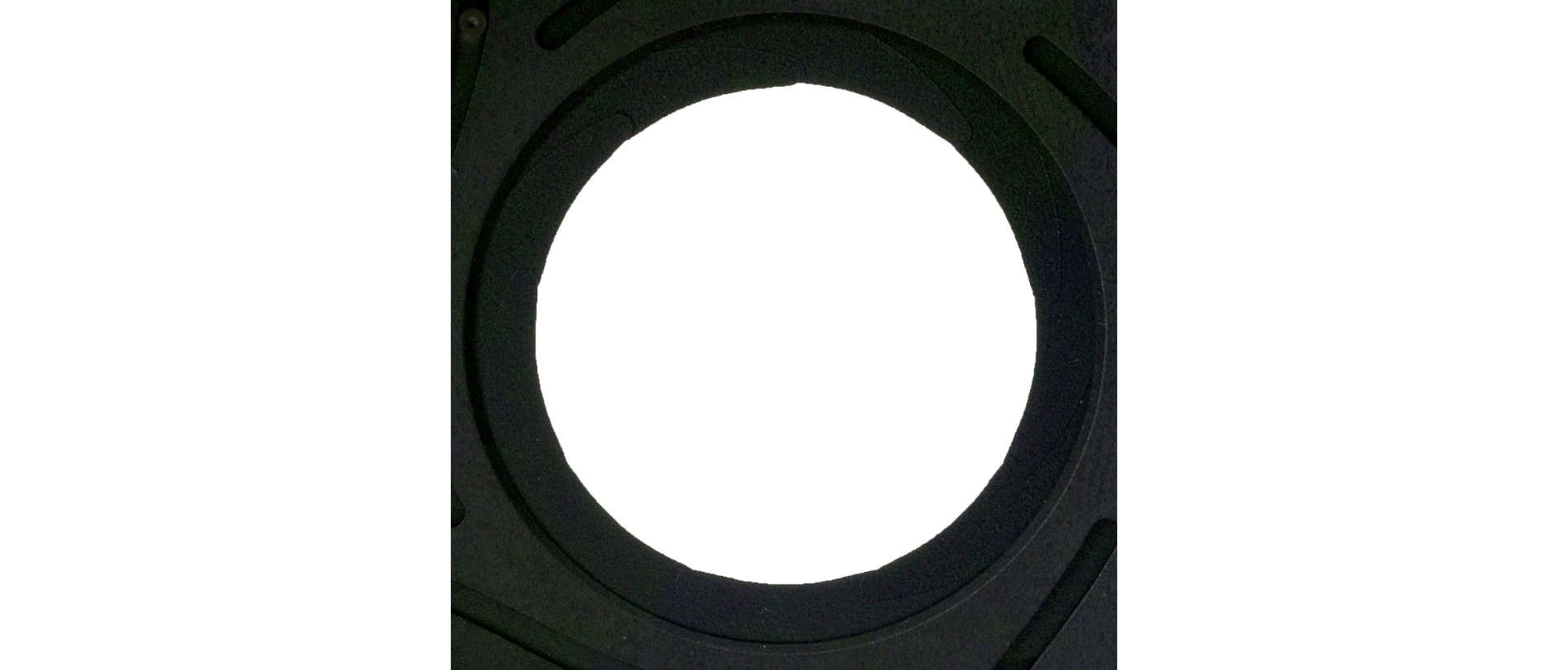

The finest in materials, usability and functionality
A refined, integrated design made with the photographer in mind.
All lenses in Sigma’s new Art line come with a hood with a high-quality rubberized connector and feature a newly designed lens cap and AF/MF switch, and are designed for intuitive use and superior functionality. Inside, HSM (hypersonic motor) delivers high AF speed and extremely quiet performance. An enhanced algorithm offers even smoother automatic focusing. Full-time manual focus override is another key feature that leaves the artistic touches in the photographer’s hands. The brass mount combines high precision with rugged construction. Its treated surfaces and enhanced strength contribute to the exceptional durability of the lens. In both the external and internal parts, the optimized use of
(*)TSC (Thermally Stable Composite), an excellent match for metal parts, further contributes to the high-precision construction of the lens.
(*)TSC (Thermally Stable Composite)
TSC (Thermally Stable Composite) is a type of polycarbonate with a thermal expansion rate similar to that of aluminum. It has high affinity to metal parts which contributes to high quality product manufacturing.


HSM (hypersonic motor)
HSM (hypersonic motor) delivers high AF speed and extremely quiet performance. An optimized algorithm offers even smoother automatic focusing, and full-time manual focus override is another key feature.
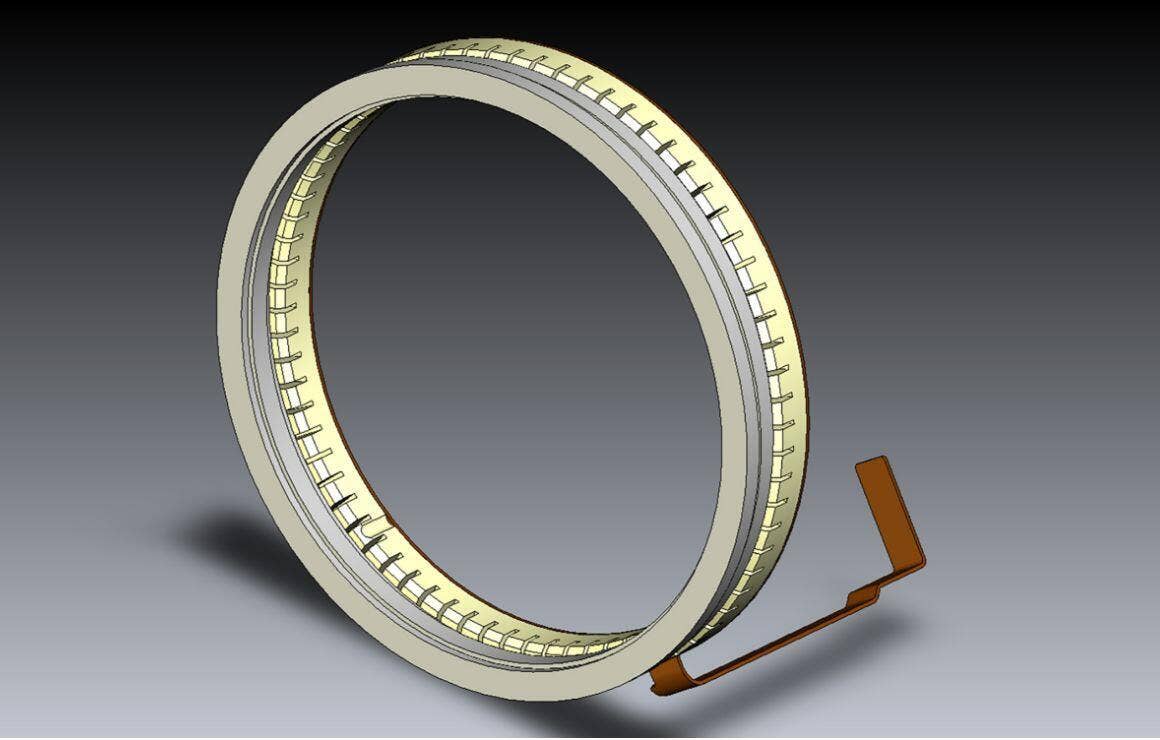

Incorporating a Rear Focus system
The lens incorporates a rear focus system that prevents focus-dependent variation in aberration, making high-level image quality possible throughout the entire image. With their unchanging barrel length, these lenses also enhance balance and stability for the photographer. Furthermore, since the front of the lens does not rotate, polarizing filters can be used with extra convenience.
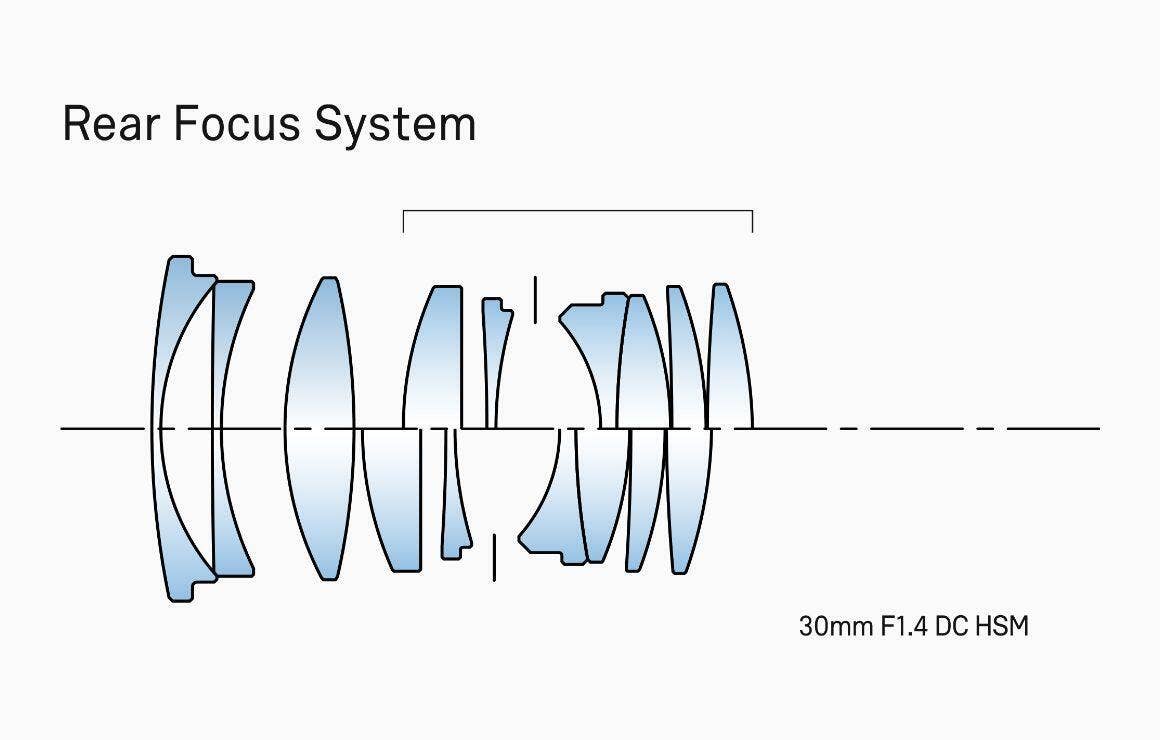

TSC (Thermally Stable Composite
A first for the industry, the barrel of the lens features a new TSC (Thermally Stable Composite) that offers minimal thermal shrinkage combined with exceptional hardness. It also offers 25% greater elasticity than polycarbonate. Since its thermal shrinkage is low, TSC matches well with metal parts, further contributing to the high-precision construction of the lens. TSC also makes possible slimmer forms for parts like zoom rings and scaling rings.
Flare and ghosting reduction
From an early stage in the lens design process, flare and ghosting have been measured to establish an optical design resistant to strong incident light sources such as backlighting. Sigma’s Super Multi-Layer Coating reduces flare and ghosting to help photographers produce sharp and high contrast images even in backlit conditions. The included lens hood can be attached to block out extraneous light, which can have a negative effect on rendering performance.


High-precision, rugged brass bayonet mount
The brass mount combines high precision with rugged construction. Its treated surfaces and enhanced strength contribute to the exceptional durability of the lens.
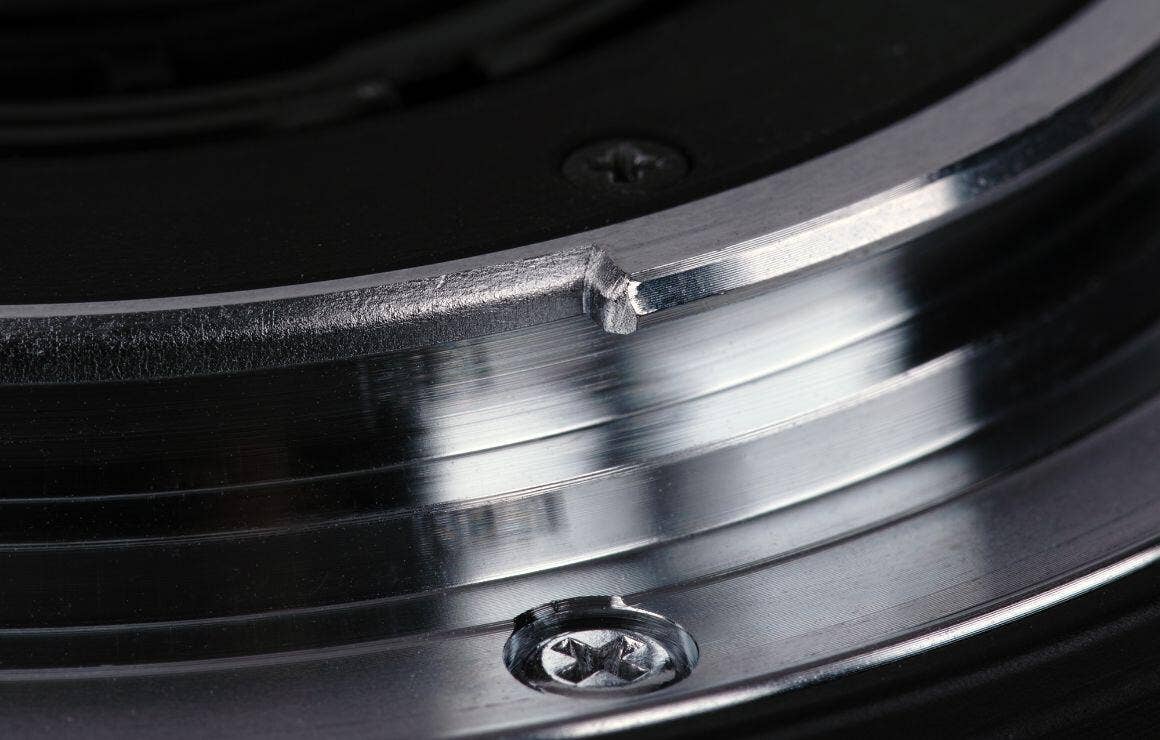

LENS CONSTRUCTION
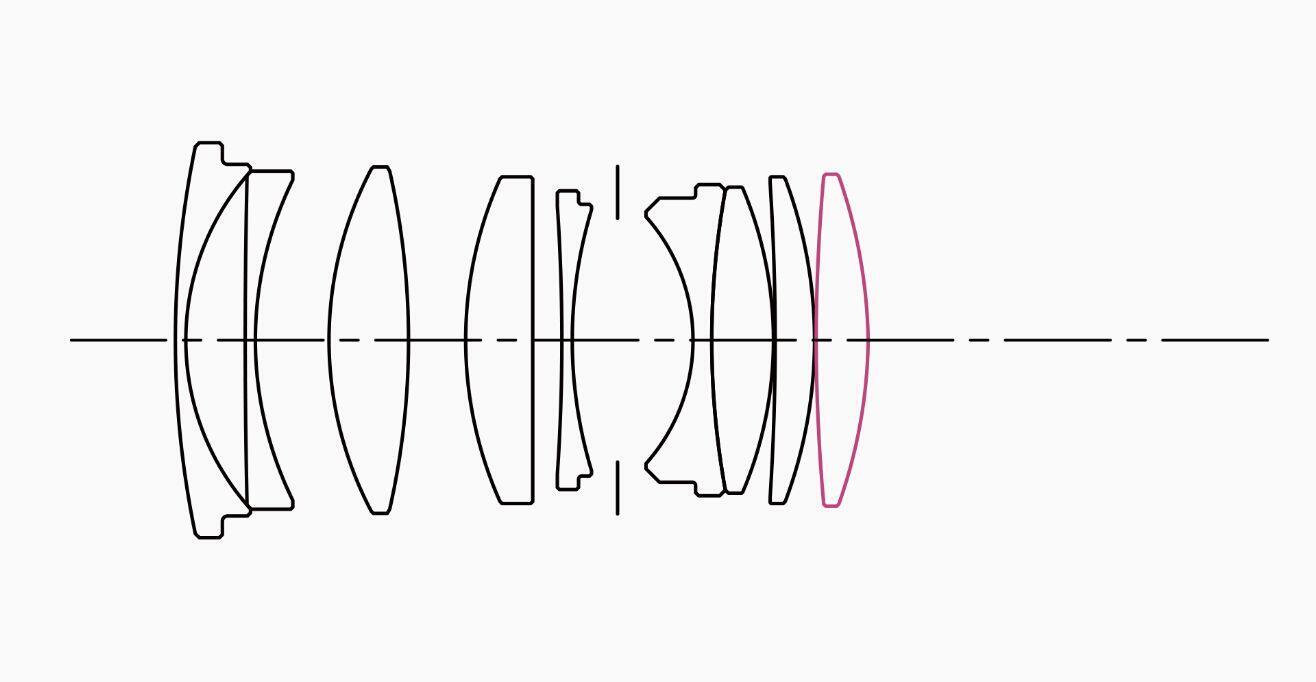

|
|
|
MTF CHART
The MTF (Modulation Transfer Function) is one of the measurements for evaluating a lens’ performance, and it shows how faithfully the contrast of the subject can be reproduced on the image plane. The horizontal axis shows the image height (distance from the center of the image in mm) and the vertical axis shows the contrast value (maximum value is 1).
The closer the 10 line pairs/mm curve is to 1, the higher the contrast and clarity of the lens is, and similarly, the closer the 30 line pairs/mm curve is to 1, the better the resolution and sharpness of the lens is.
*The MTF chart depicts the result at the wide-open aperture.
*For mirrorless lenses that support distortion correction, the horizontal axis shows the image height equivalent to when an L-Mount lens is attached to a Sigma L-Mount camera with distortion correction applied. (The effect of distortion correction may differ depending on the mount and camera used.)
*The spatial frequency indicates the variation on the image plane before distortion correction is performed.
|
Spatial frequency |
S:Sagittal Line |
M: Meridional Line |
|
10lp/mm |
|
|
|
30lp/mm |
|
|
DIFFRACTION MTF xxMM
DIFFRACTION MTF
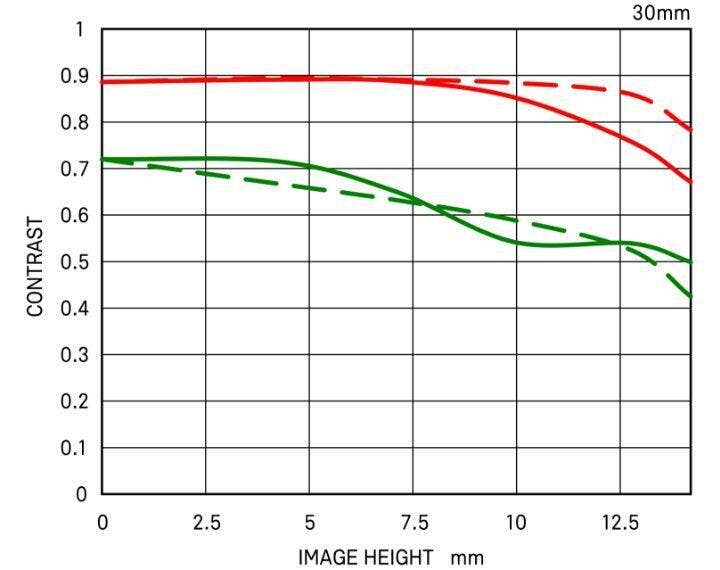

GEOMETRICAL MTF xxMM
GEOMETRICAL MTF
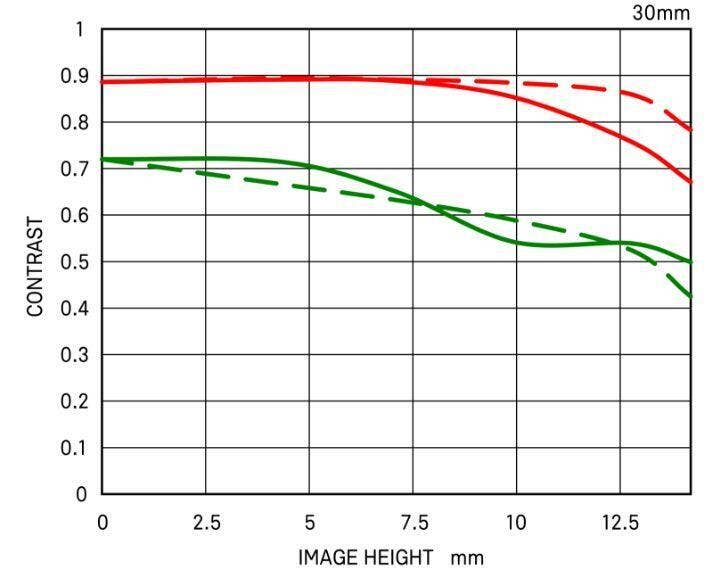

High-precision, rugged brass bayonet mount
The brass mount combines high precision with rugged construction. Its treated surfaces and enhanced strength contribute to the exceptional durability of the lens.
HSM (Hyper Sonic Motor)
The Hyper Sonic Motor (HSM) is an original Sigma development that uses ultrasonic waves to drive the autofocus mechanism. Its extremely quiet operation helps avoid disturbing photographic subjects. High torque and speed assure rapid autofocus response. Sigma uses two types of HSM: ring HSM and micro HSM. The Ring HSM configuration permits manual fine tuning of focus (manual override) by turning the focusing ring after autofocus is complete.
Rounded diaphragm
The polygonal shape of a conventional iris dia phragm causes out-of-focus light points to appear polygonal. A rounded diaphragm is designed to pro duce rounded out-of-focus light points when opened to near maximum aperture. This creates attractive bokeh effects in many situations, such as when pho tographing a subject against an out-of-focus surface of water from which light is being reflected.
Exclusive low-dispersion glass
The degree to which light is refracted by glass depends on the light's wavelength. This fact causes different colors of light to focus at slightly different points. The result is chromatic aberration, the color fringing that is particularly noticeable in telephoto lenses. Most chromatic aberration can be removed by combining a high-refractivity convex lens element with a low-refractivity concave element. Yet residual chromatic aberration known as "secondary spectrum" may still remain. To minimize this secondary spectrum, which can be a serious issue with conventional lenses, Sigma lenses feature up to three types of exclusive low-dispersion glass offering superior performance: ELD (Extraordinary Low Dispersion), SLD (Special Low Dispersion) and FLD ("F" Low Dispersion). In particular, FLD glass offers ultra-low dispersion in combination with high transmittance and the anomalous dispersion characteristics of fluorite. Meticulous deployment of these types of exclusive low-dispersion glass and optimization of power distribution gives Sigma lenses superlative image rendition undiminished by residual chromatic aberration.

